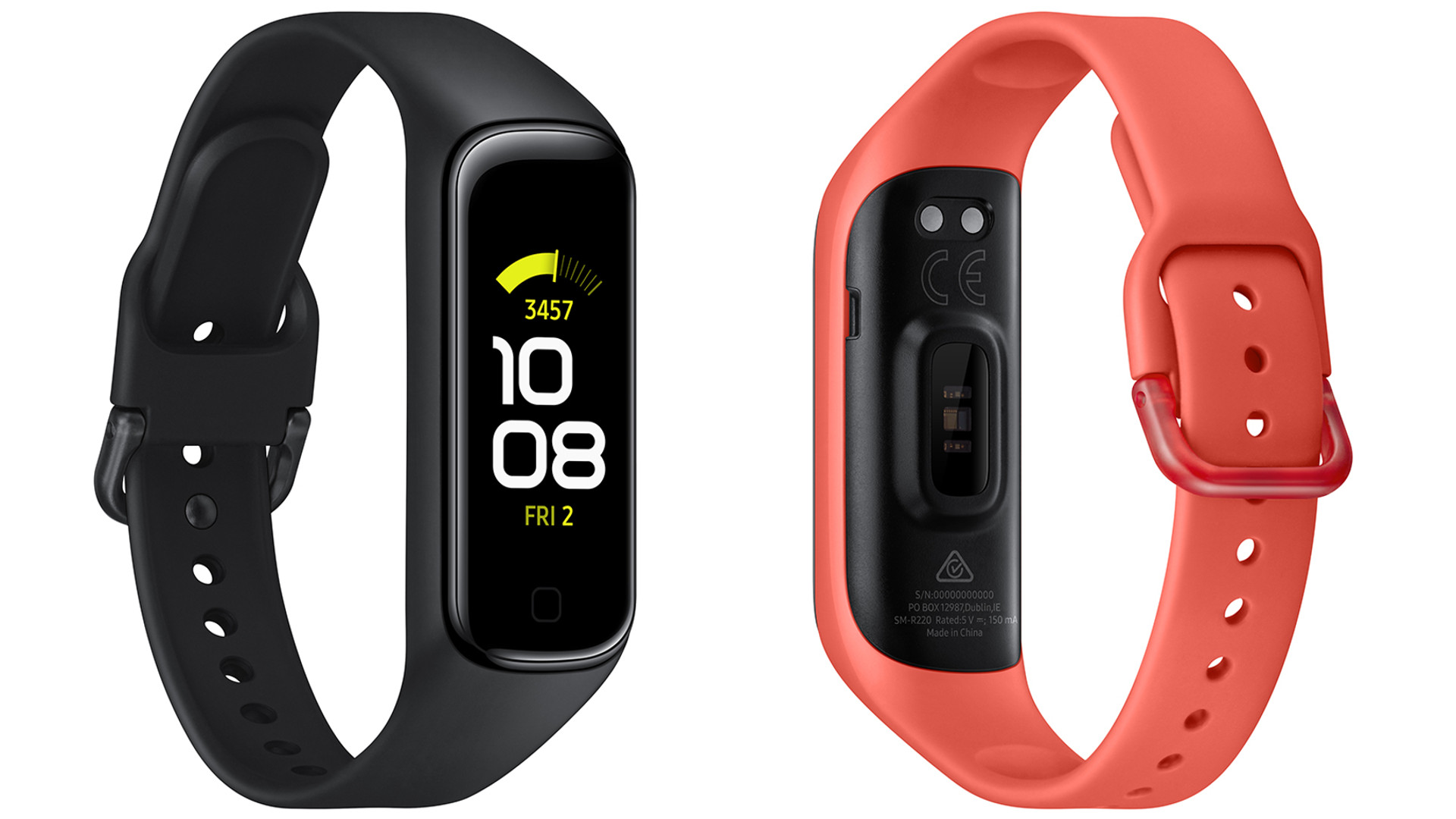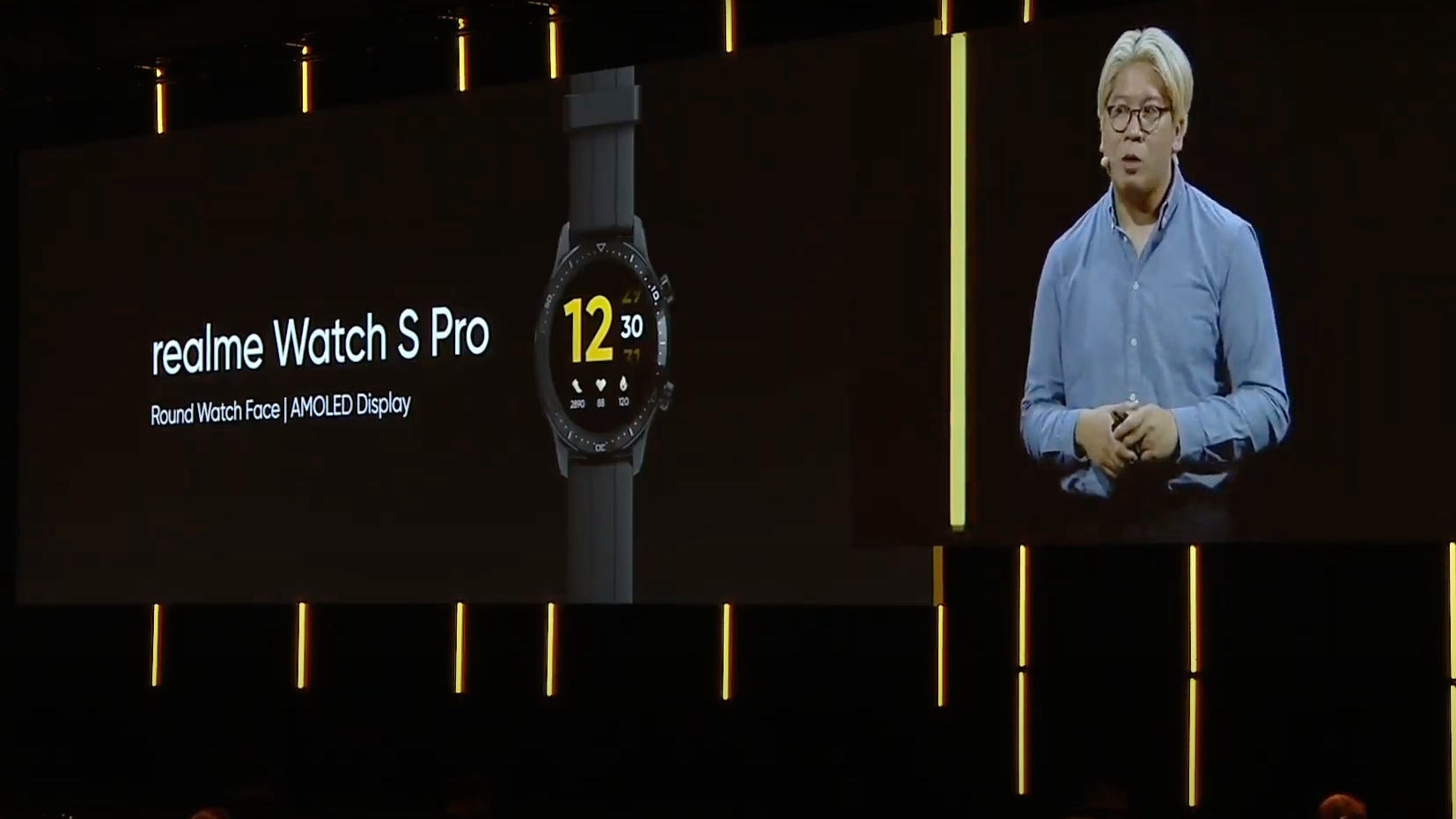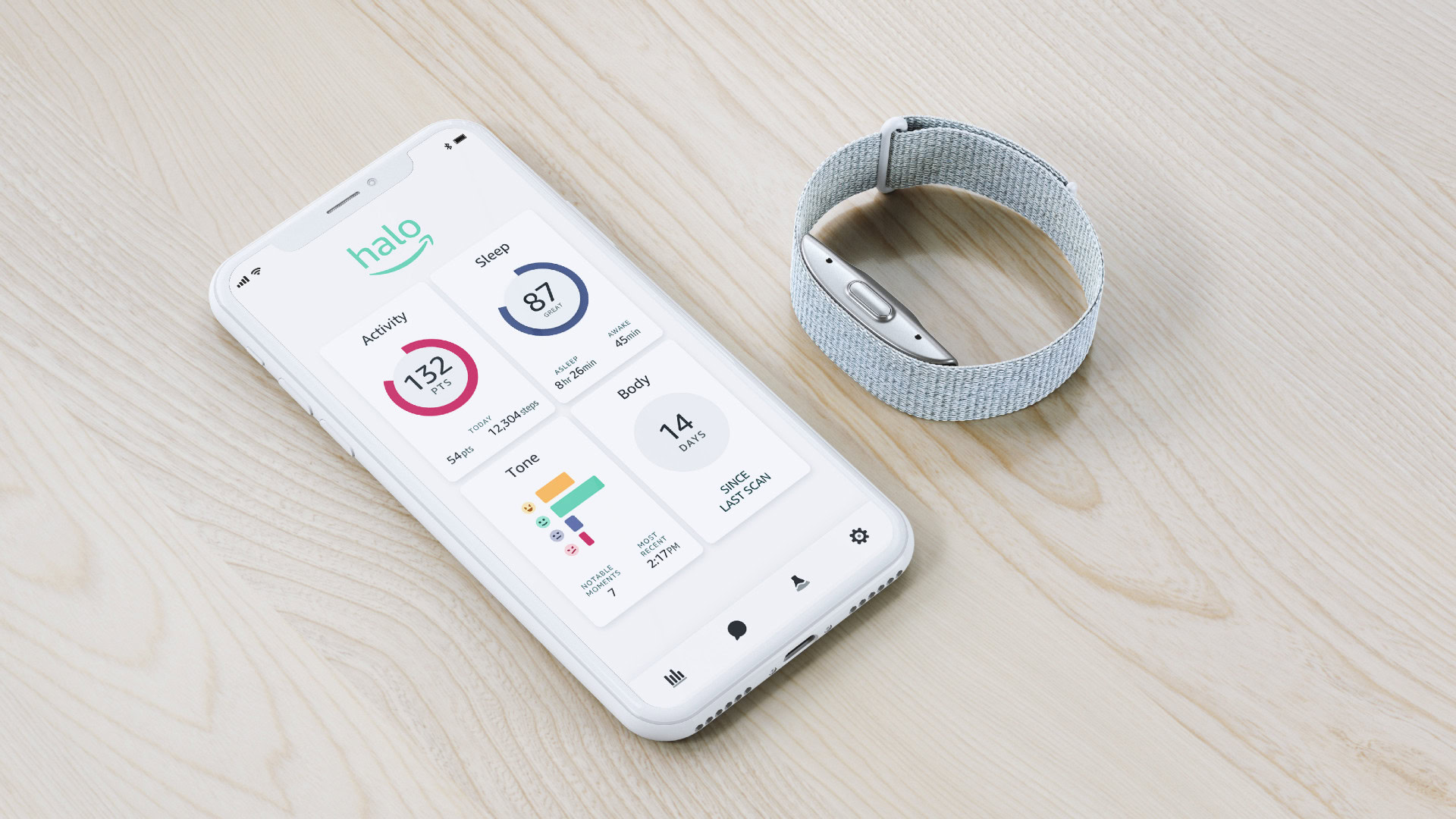Affiliate links on Android Authority may earn us a commission. Learn more.
The best smartwatches and fitness trackers launched at IFA 2020
Published onSeptember 7, 2020
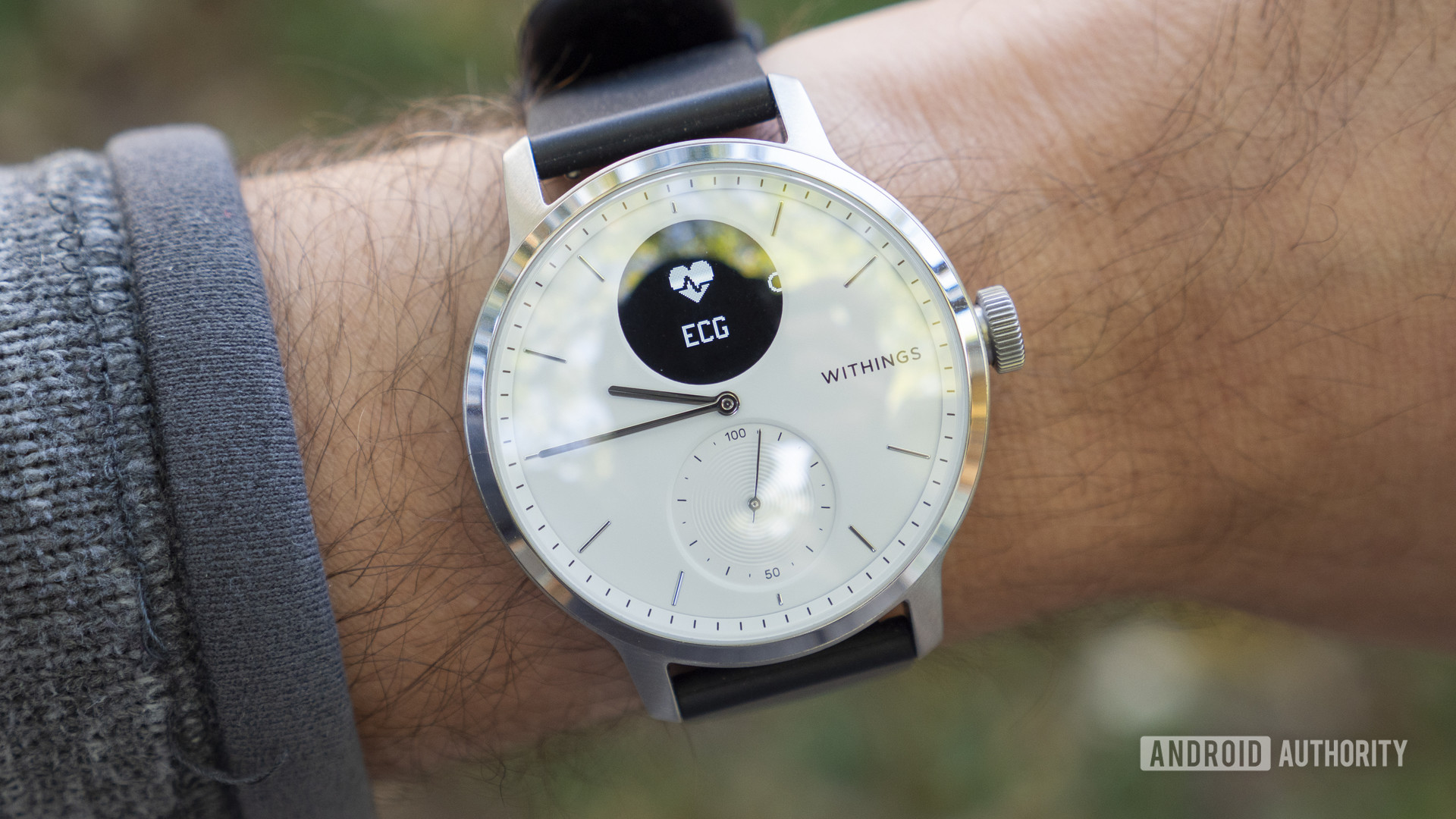
IFA 2020 is an odd trade show. It’s still happening, but most of the major companies that would normally be in attendance are instead holding virtual events. Android Authority isn’t even attending in person this year! Despite this, plenty of interesting new products are making their debut this week, from laptops to audio products to, you guessed it, wearables.
These are the best new smartwatches, fitness trackers, and other wearables from IFA 2020.
Fitbit Sense, Versa 3, and Inspire 2
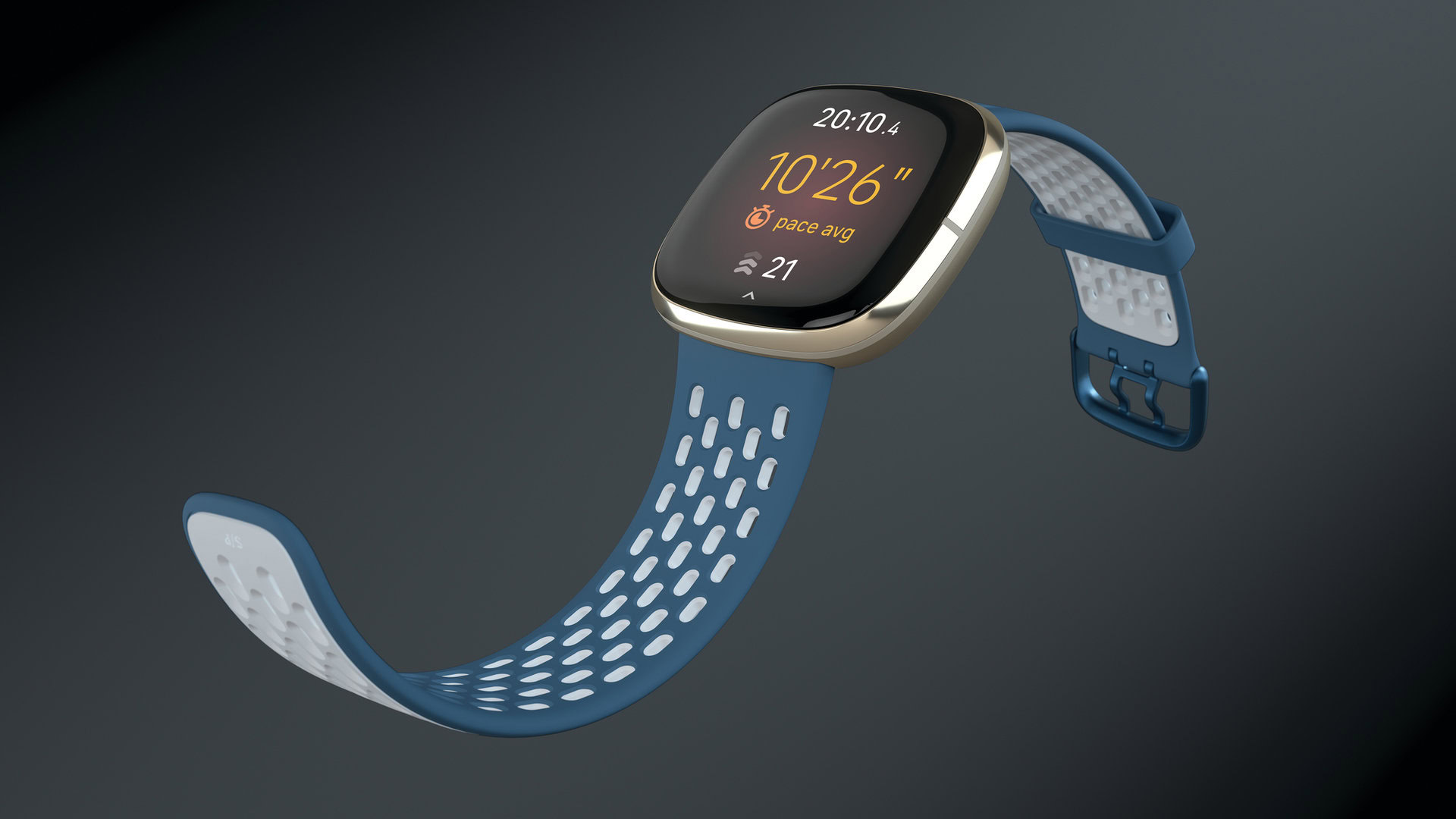
Fitbit may have had a slightly lackluster 2019, but the company appears to be launching more compelling hardware this year. The Fitbit Sense is Fitbit’s new flagship smartwatch, with all the health sensors you could possibly want. It has an EDA sensor, which measures your body’s electrodermal activity to record your stress levels. It also has a built-in ECG monitor for taking on-demand electrocardiogram readings (pending FDA approval), as well as a skin temperature sensor that will notify you if it senses any potential signs of illness.
Fitbit also included built-in GPS, Google Assistant support, an SpO2 sensor, and an improved heart rate sensor that should be more accurate that previous models. Still no offline Spotify support, though. The Fitbit Sense will be available later this month for $330.
Fitbit also recently debuted the Versa 3, the follow-up to its popular Versa 2 smartwatch from last year. It’s nearly the same smartwatch as the Fitbit Sense, minus the coolest new features — there’s no EDA, ECG, or skin temperature sensors. There’s also no six-month trial of Fitbit Premium with Versa 3 purchases, and it doesn’t alert you of high/low heart rate readings while you’re inactive.
The Fitbit Inspire 2 was also unveiled as a small upgrade to the Inspire HR. The Fitbit Inspire 2 has a new inductive button on the side in lieu of the Inspire HR’s physical button. The display has been improved too, and it has double the battery life at 10 days. The kicker here is that Fitbit is throwing in a full year of Fitbit Premium (for new users) with purchases of the Fitbit Inspire 2. Considering Fitbit Premium normally costs $80 a year, this is an absolute steal if you’re new to the Fitbit ecosystem.
Read more about the Fitbit Sense, Versa 3, and Inspire 2 here.
Withings ScanWatch
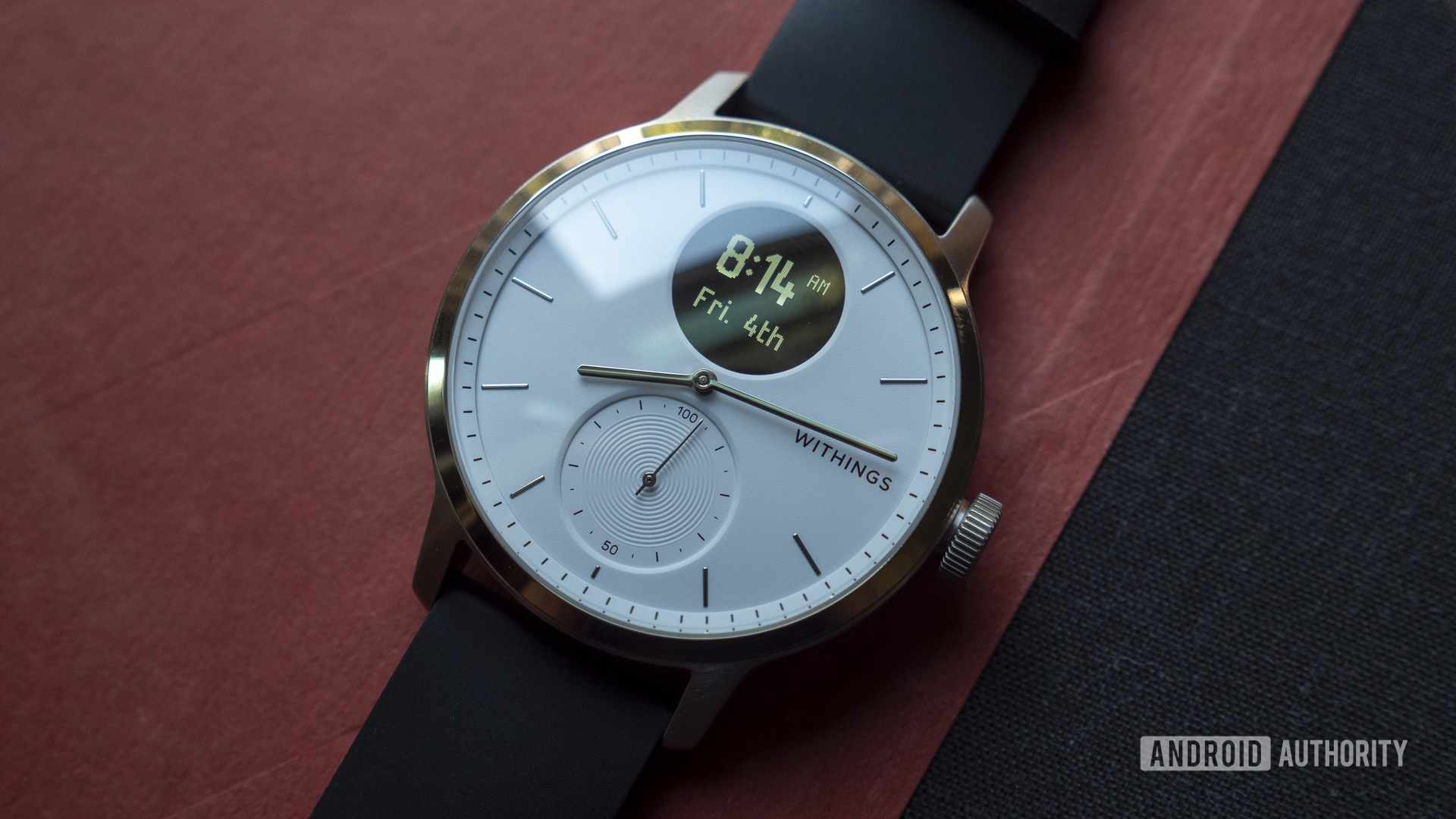
Okay, okay. The Withings ScanWatch isn’t technically being announced at IFA 2020 (it was unveiled at CES) but the company announced it’s finally releasing the watch in Europe. The Withings ScanWatch has received CE clearance to notify users for signs of AFib and overnight breathing disturbances, with CE clearance for sleep apnea detection arriving later this year.
It has a built-in ECG, pulse oximeter, optical heart rate sensor, and connected GPS support. It’s also the most well-built Withings product ever.
Don’t miss: Withings ScanWatch review
Samsung Galaxy Fit 2
Samsung quietly announced a boatload of affordable products at IFA 2020, one of which is the Samsung Galaxy Fit 2. This affordable smartwatch is the follow-up to 2019’s Galaxy Fit fitness tracker. It has a larger display than the original Fit and can last up to 15-21 days on a single charge. That’s Xiaomi Mi Band 5 territory!
We don’t have many other details on the Galaxy Fit 2, but we expect to learn more soon. It’ll likely cost less than $100.
HONOR Watch GS Pro and HONOR Watch ES
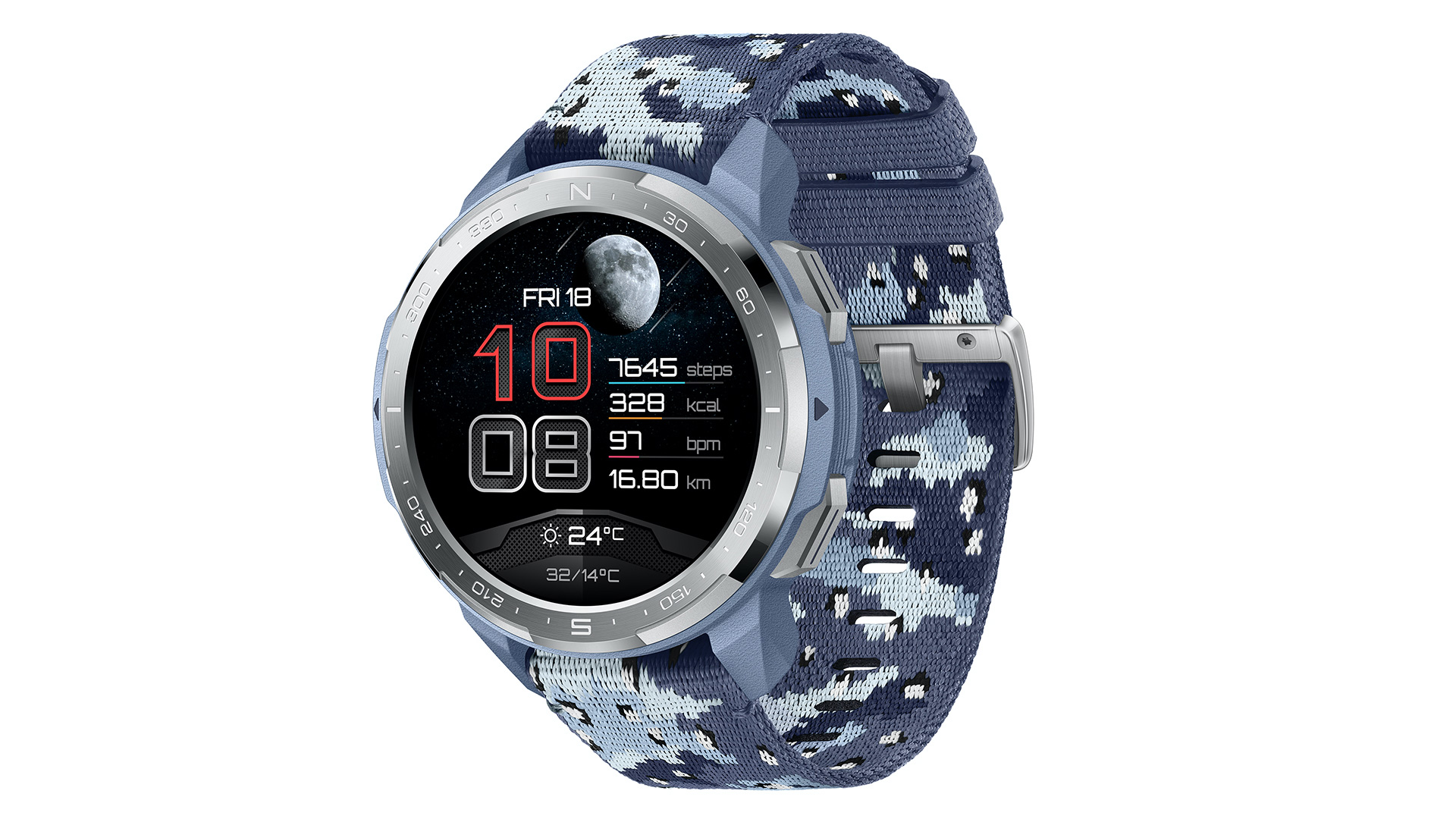
Honor’s new smartwatches are for the outdoor enthusiasts and people who just want a good-looking wearable. They’re also great picks if you happen to be on a budget.
First, the HONOR Watch GS Pro. As you can probably tell by the image above, the GS Pro is a rugged smartwatch with a MIL-STD-810G rating and a durable, plastic chassis. The headline feature, though, is its advertised 25-day battery life — perfect if you need a long-lasting outdoor watch for your camping trip. It supports over 100 workout modes, has an SpO2 monitor, and a nifty “route back” feature that’ll help you retrace your steps if you need to get back to where you started. That’s something we normally only see in high-end fitness watches.
Not interested in rugged wristwear? The HONOR Watch ES might be more your speed. It, too, has an SpO2 sensor and supports 95 workout modes. It drops the military spec rating but adds a personal virtual coach that uses animations to help guide you through workout routines and running courses. The HONOR Watch ES’ battery lasts ‘just’ 10 days on a charge, which is still good for a smartwatch.
HUAWEI Watch Fit
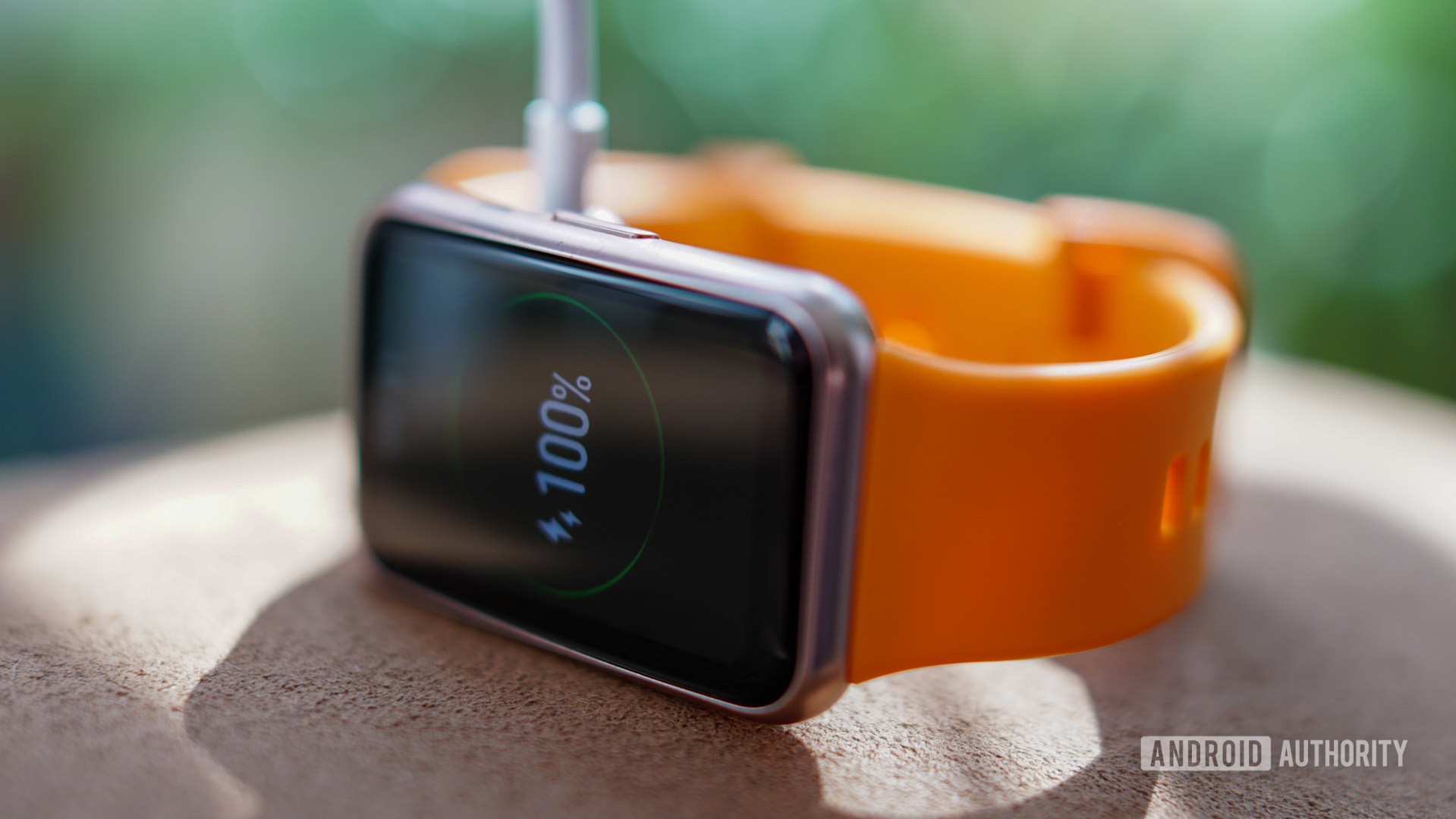
HUAWEI created a skinny Apple Watch for the fitness crowd. It’s called the HUAWEI Watch Fit, and it falls somewhere between a basic activity tracker and full-fledged smartwatch.
It has a slightly curved 1.64-inch OLED display and runs HUAWEI’s Lite OS, the same operating system that powers other recent HUAWEI Watch devices. HUAWEI advertises 10 days of battery life with the Watch Fit, as well as built-in GPS, 5ATM water resistance, SpO2 monitoring, breathing exercises, sleep and activity tracking. It can track 96 activities, to be exact.
The HUAWEI Watch Fit is certainly a departure from HUAWEI’s other wearables, but who can complain about a simpler, sleeker design?
Amazfit Band 5
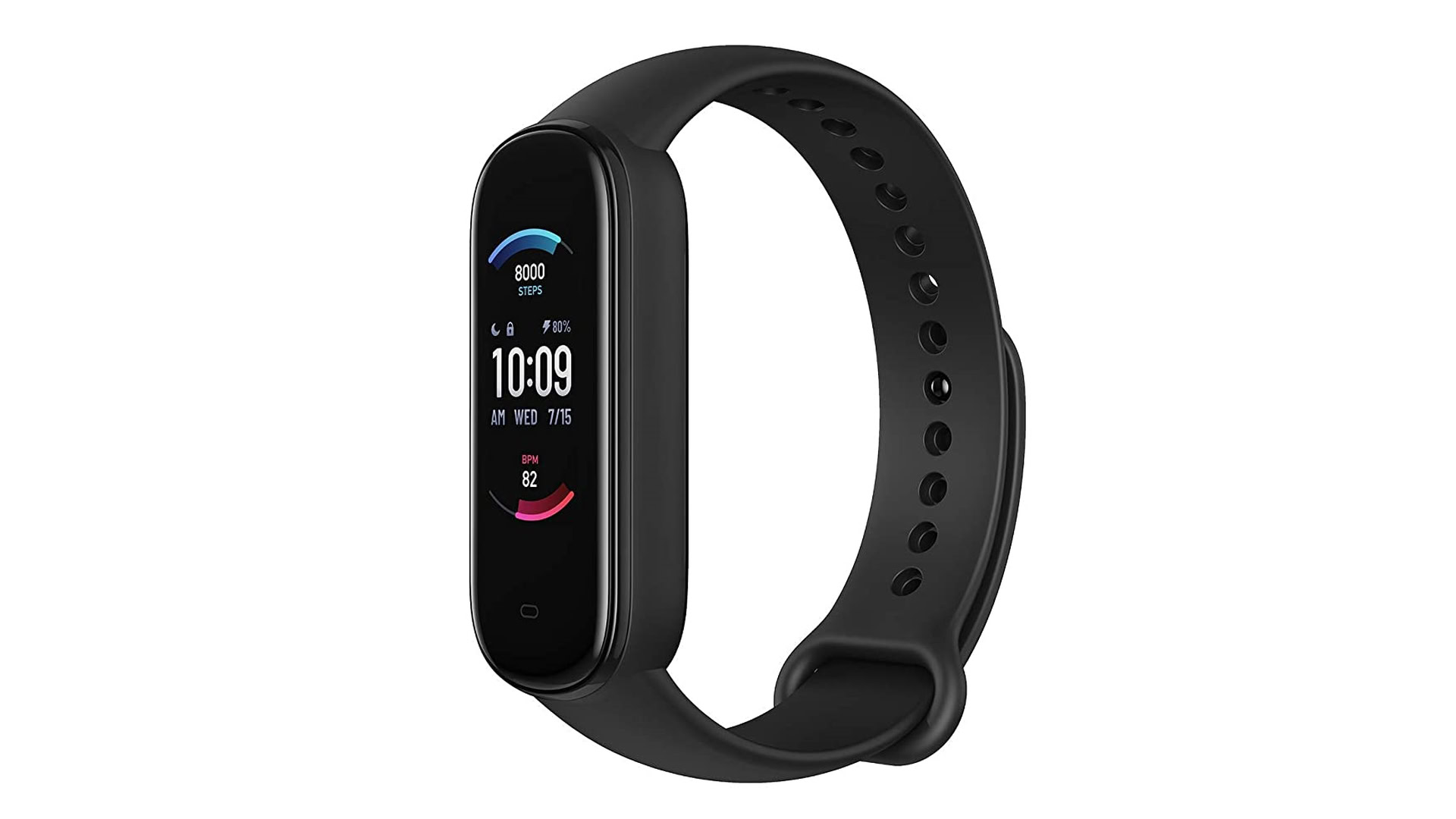
Amazfit wearables are uber-popular due to their low price points, and the Amazfit Band 5 perfectly reflects that idea. That shouldn’t come as much of a surprise, considering it’s essentially an upgraded Mi Band 5.
The Amazfit Band 5 has a color AMOLED display, Amazon Alexa support, a pulse oximeter, an optical heart rate monitor, and sleep tracking. The battery should last about two weeks on a single charge.
Also read: The best fitness trackers you can buy
TCL Move Time Family Watch
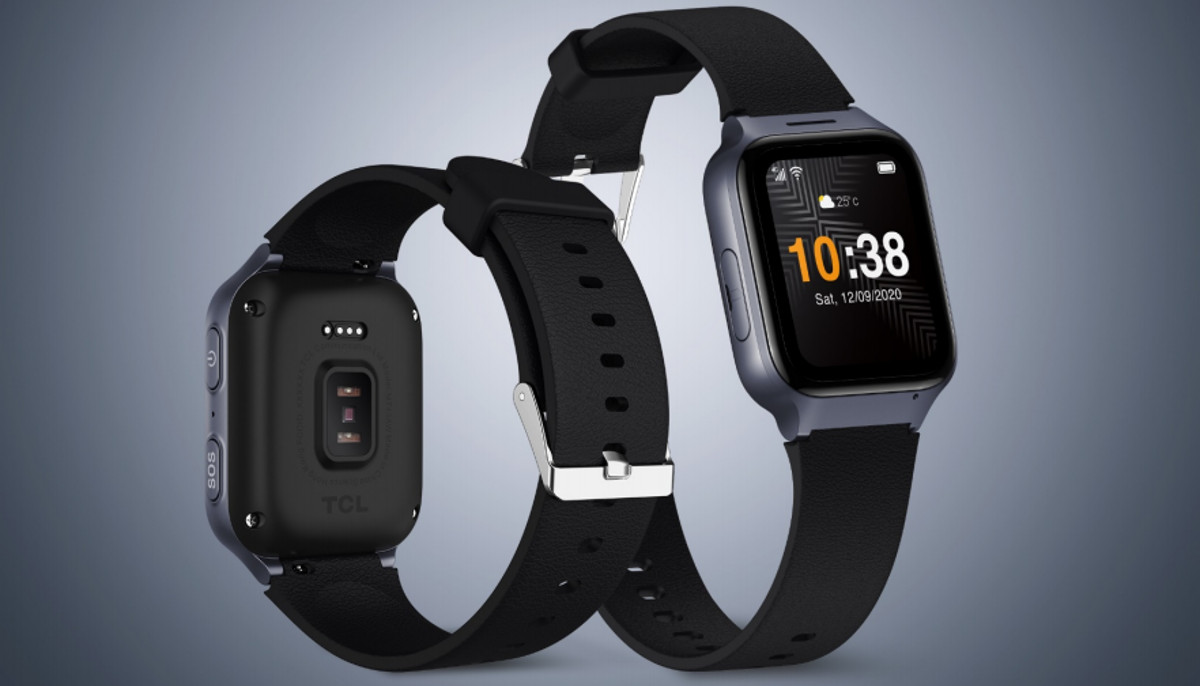
TCL isn’t the first company you think of when the word “smartwatches” comes up, but the company has a few inexpensive wearables in its lineup that are worth checking out. The latest release is the TCL Move Time Family Watch, which is aimed a seniors.
The Move Time watch has a 1.41-inch AMOLED display, 4GB of onboard storage, an older Snapdragon Wear 2500 chipset, and 512MB of RAM. TCL estimates it should last around two days on a charge.
What makes this watch built for seniors? It offers fall detection — which will kick in if the accelerometer senses that the user has tripped and fallen — as well as other smartwatch staples like a heart rate monitor, sleep and step tracking, and cellular support via nano-SIM or eSIM.
realme Watch S Pro
Details on the realme Watch S Pro are scarce, but we’re liking what we’re seeing so far. The new smartwatch will launch in European markets later this year. It’ll come with a round AMOLED display, and the design reminds us a lot of the HUAWEI Watch GT.
Judging by realme’s product portfolio, we expect a low price point for the realme Watch S Pro.
Amazon Halo Band
Amazon is pretty new to the wearable game, and it appears to be entering the space with a more controversial offering called the Amazon Halo Band. The Halo Band is part of Amazon’s new health and wellness platform, which it’s simply calling Amazon Halo. The Halo Band will set you back just $100 and features basic activity tracking.
The most interesting part of the Amazon Halo Band is a feature called Tone, which uses two built-in mics to monitor the sound of your voice. It records clips of you talking, then analyzes and categorizes it into different emotional states. Amazon says some of those categories include hopeful, elated, bored, apologetic, and worried. The hope is that the Halo Band will be able to give you tips on how to sound warmer and more positive throughout the day. However, people might not like an Amazon wearable telling them to cheer up.
The Halo Band will also attempt to measure your body fat percentage by analyzing images of your body. It does so by taking a handful of your photos, sending them to Amazon’s cloud servers to compile into a 3D scan, which will then be sent back to your phone. The Halo app will then use machine learning to calculate your body fat percentage.
It’s an odd wearable, to be sure, but one we’re excited to test out.
Read next: IFA 2020: The best audio announcements from the show
